Best Hotel Booking Sites for Hoteliers: Distribution Strategy Guide
Nov 18, 2025
 Mika Takahashi
Mika TakahashiPopular Categories
Hotel Technology & InnovationHotel Operations OptimizationDigital MarketingIndustry TrendsRevenue ManagementHospitality Industry
Popular Categories
Trending Post
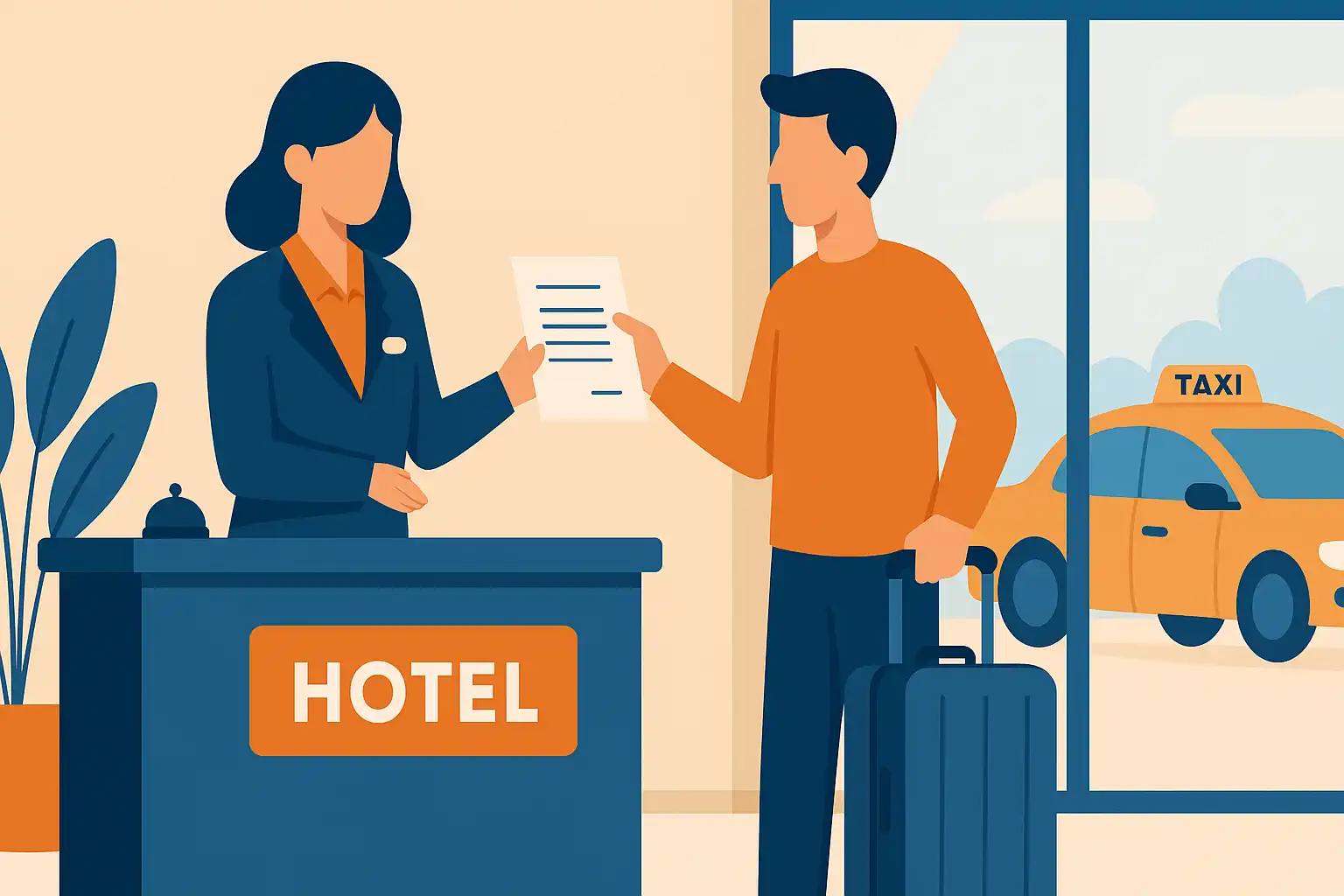
Hotel Walk Letter Template: Professional Guest Communication
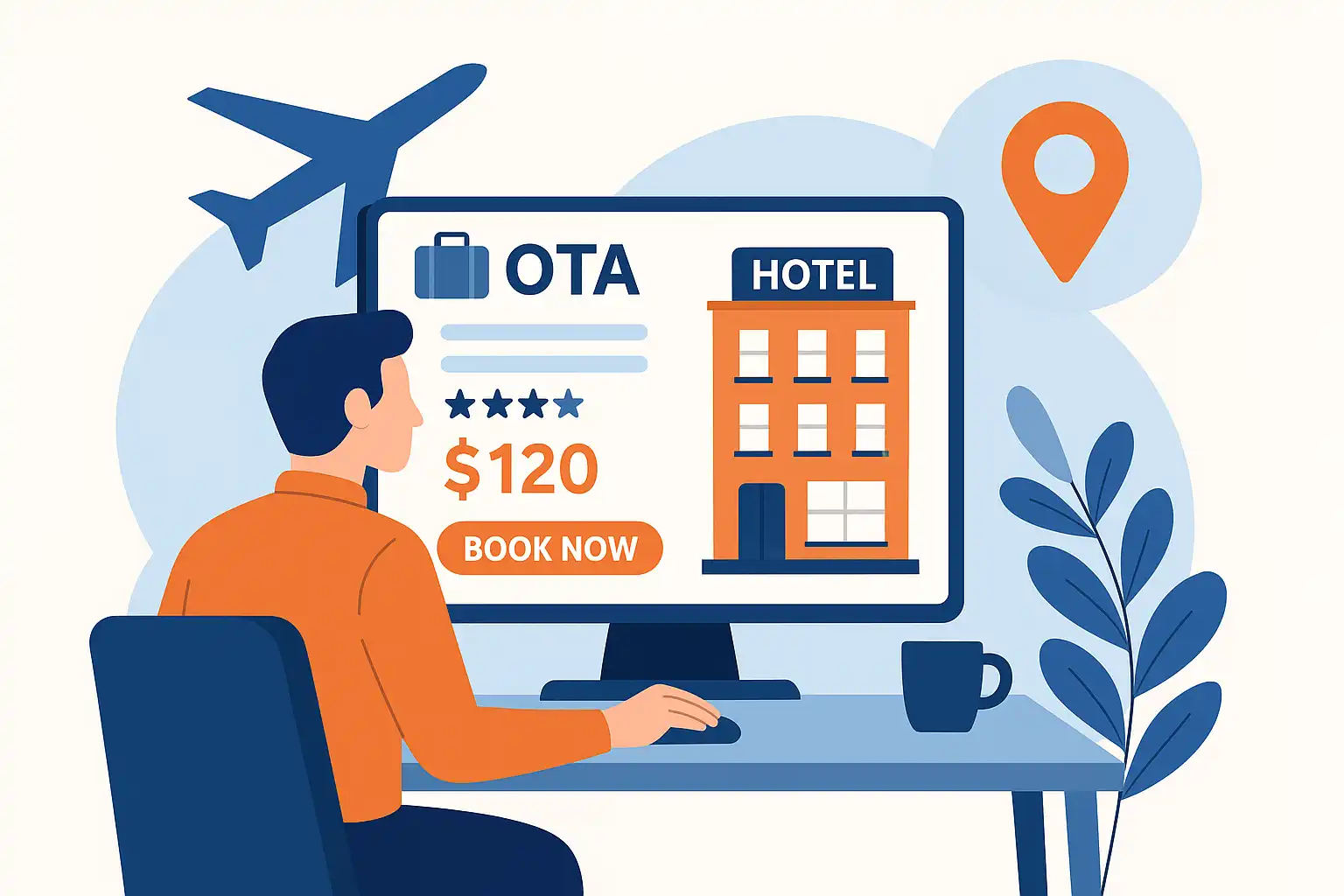
Online Travel Agents: What They Are and How They Work

Hotel Security Systems: Modern Protection Solutions

Hotel Advertising: Complete Guide to Boost Bookings and Revenue
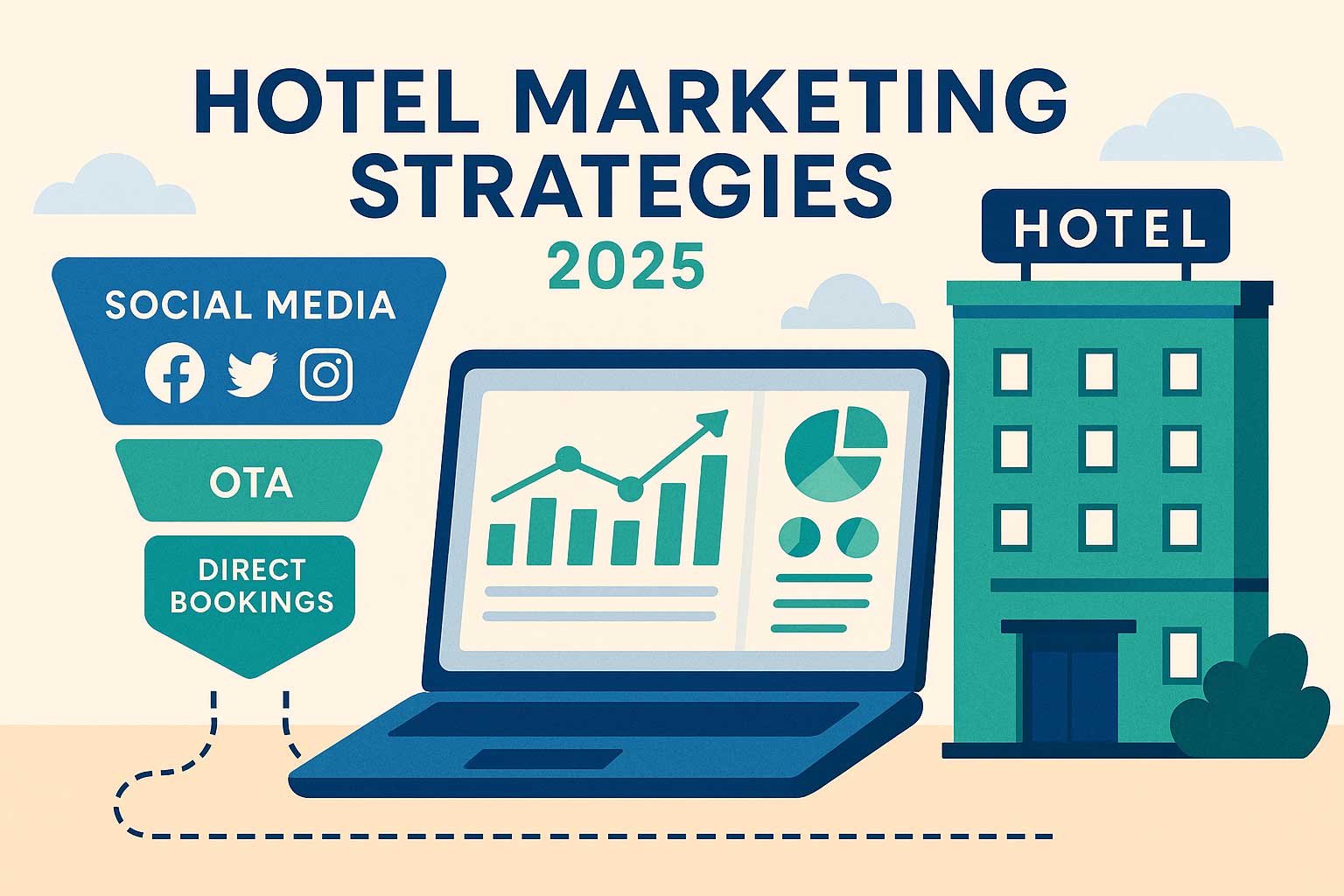
25 Hotel Marketing Strategy Ideas for 2025: Complete Guide

AI Reservation Agent: Revolutionizing Hotel Booking and Guest Experience

PMS Communication: Streamlining Property Management Through Effective Guest Messaging
Table of contents
More than 40% of hotel bookings come through online travel agencies (OTAs). For you as a hotelier, choosing the right distribution partners isn’t just a detail — it’s a key revenue decision that can make or break your property’s profitability. The hotel booking site landscape has grown into a complex ecosystem. Understanding commission structures, market reach, and platform strategies directly impacts your bottom line.
So, when you’re navigating this competitive field, the question isn’t just which booking sites are out there. It’s which platforms give you the best return on investment while keeping your profit margins healthy. This guide dives into the best hotel booking sites from a hotelier’s perspective, offering strategic insights to help you optimize your distribution mix and maximize revenue per available room (RevPAR).
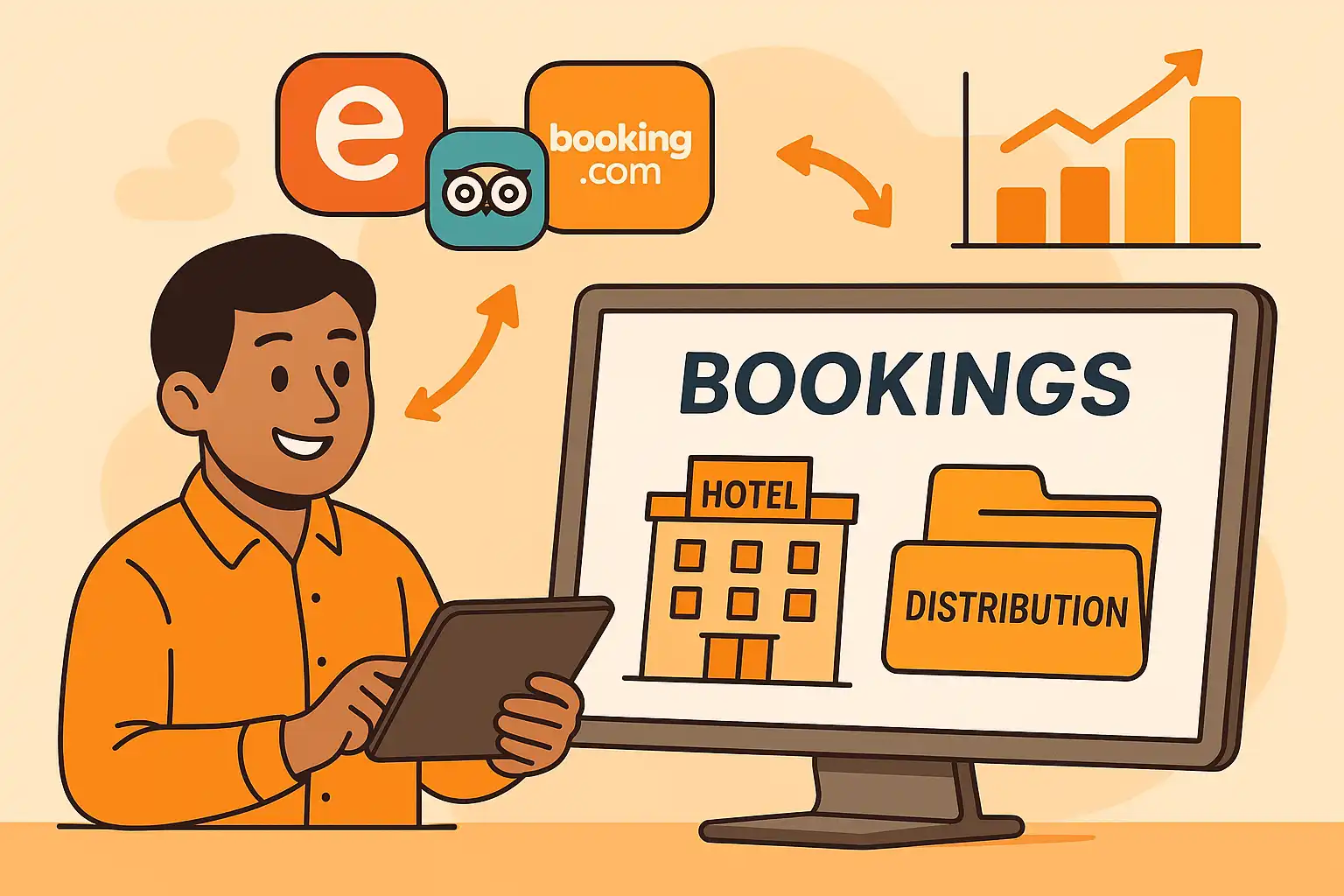
Understanding the Hotel Distribution Landscape
The hotel distribution world today breaks down into three main channels, each with its own business model and impact on your revenue. OTAs operate on commission-based models, usually taking 15-25% of each booking. In exchange, they offer marketing reach and booking facilitation. Meta-search engines work differently: they use cost-per-click (CPC) advertising, letting hotels bid for visibility while retaining more control over bookings. Then there’s direct booking — the holy grail for many hoteliers — which cuts out third-party commissions and builds direct guest relationships.
Market share is concentrated. Booking.com holds about 40% of the global OTA market, followed by Expedia Group at 25%. The rest is split among regional and specialty platforms. This means your partnerships with the big players often determine your online visibility and booking volume.
Rate parity agreements are a major factor here. Most OTAs require you to maintain consistent pricing across channels, so you can’t offer lower rates on your direct booking site than on OTAs. This can make it tricky to push direct bookings while keeping OTAs happy.
Then there’s the Best Available Rate (BAR) policy. You need to ensure your lowest public rate is consistent across all channels. Break that rule, and you risk penalties like reduced visibility or even suspension from booking platforms.
Major OTA Platforms: Revenue Impact and Commission Structure
Let’s look at how the big OTA platforms affect your revenue and what you need to know to optimize these partnerships.
Booking.com: Market Leader Analysis
Booking.com dominates thanks to its massive inventory — over 28 million properties — and smart marketing algorithms that keep bookings flowing. But that reach comes at a price. Commissions usually range from 15-25%, depending on your property type, location, and partnership level.
Their Genius loyalty program is a double-edged sword. On one hand, it attracts repeat guests by offering perks like room upgrades, late checkout, or free breakfast. On the other, these perks cut into your margins on each booking. Still, many hoteliers find the tradeoff worthwhile because it boosts occupancy and guest satisfaction.
Booking.com’s Preferred Partner Program offers better visibility and promotional opportunities but at higher commissions — often 18-22%. Hotels in this program can see booking volume jump 15-30%, but you need to crunch the numbers carefully to make sure the extra commission doesn’t eat up your profits.
Payment options include guest-paid reservations (pay at property) and virtual credit card payments processed by Booking.com. The virtual card reduces no-show risk but comes with extra processing fees and currency exchange costs that can chip away at your net revenue.
If you manage a large hotel or group, you might negotiate commission rates, especially if you commit to minimum room allocations or exclusive promotions. Independent hotels sometimes get modest reductions this way.
Pro tip: Front desk teams should be trained to remind guests booking through Genius about the perks they’re entitled to. It enhances guest experience and reinforces the value of participating in the program.
Expedia Group Portfolio Strategy
Expedia Group spreads your inventory across multiple brands: Expedia.com, Hotels.com, Vrbo, and others. Each targets different customer segments, which can boost your booking volume but means juggling various commission structures.
Commissions typically run 18-25%, with Hotels.com often at the higher end because of its loyalty program. Expedia’s package deals bundle hotels with flights or car rentals. While these can increase overall revenue, hotel margins often shrink to support discounted package pricing.
Expedia Partner Central offers tools for demand forecasting, competitive rate intelligence, and promotions. These help you optimize pricing, but the platform favors properties with competitive rates and high availability.
Hotels.com’s loyalty program rewards guests with free nights after ten stays. This drives repeat business but effectively lowers your average daily rate. You’ll want to assess the lifetime value of these guests versus immediate revenue impact.
Package deals also attract price-sensitive travelers who may spend less on food, spa, or other services during their stay. Keep an eye on total revenue, not just room revenue.
Regional OTA Powerhouses
Agoda leads in Asia-Pacific, with commissions around 15-20%. It’s a must for properties targeting leisure travelers in that region, especially in budget and midscale segments. Luxury hotels may see less incremental value here.
Trip.com is expanding in Europe, focusing on Chinese outbound tourists. If your property is in a major city or popular destination, it’s worth evaluating Trip.com for its competitive commissions and marketing reach.
Regional OTAs often offer more flexible terms than global ones, including negotiable commissions and dedicated account management. Boutique hotels can use these partnerships to stand out from big chains.
Currency and payment processing vary by region. Some platforms offer local currency settlements, reducing exchange rate risks. Factor in wire transfer fees and payment timing when comparing options.
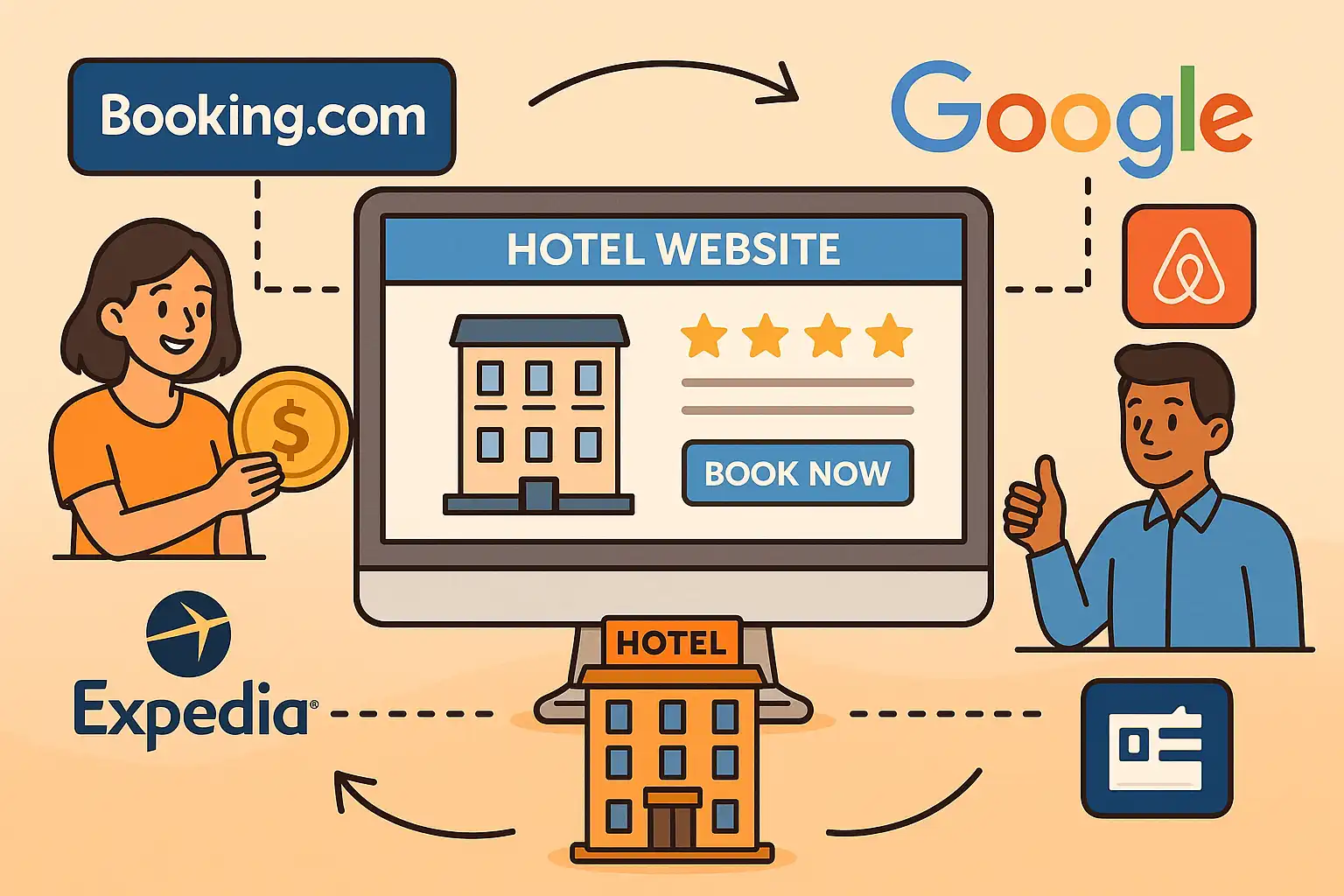
Meta-Search and Aggregator Platforms
Meta-search engines like Google Hotel Ads, TripAdvisor, Trivago, and Kayak don’t handle bookings directly. Instead, they send traffic to booking options, letting hotels compete for direct bookings while benefiting from OTA partnerships.
Google Hotel Ads works on a CPC model. Hotels bid for visibility, often achieving acquisition costs of 2-5%, which can be lower than OTA commissions. But managing Google Hotel Ads requires ongoing optimization and competitive bidding.
Bidding should target high-intent keywords and relevant locations. For example, luxury hotels might bid on terms like “luxury hotel San Francisco,” while budget properties focus on “cheap hotels near downtown.”
TripAdvisor’s meta-search leverages its trusted reviews to influence booking decisions. Hotels with strong ratings get better click-through rates and lower CPCs. So, reputation management pays off here.
Trivago and Kayak mainly compare prices, directing users to book through their preferred channels. To win bookings, your direct booking rates and value propositions need to be competitive.
The biggest advantage of meta-search is driving direct bookings, eliminating OTA commissions. But success demands investment in conversion optimization and user experience — a challenge for smaller properties.
Myth vs Reality: Many hoteliers think meta-search is “free” traffic. The reality? It costs money through CPC campaigns and requires dedicated management to deliver ROI.
Commission Costs and Profitability Analysis
Understanding your true distribution costs means looking beyond base commissions. OTA commissions run 15-25%, but add marketing co-op fees, connectivity charges, and payment processing — total costs can reach 18-30% of gross room revenue.
Meta-search platforms typically have CPC costs of 2-5%, but poorly managed campaigns can exceed OTA commissions.
ROI isn’t just immediate profit. OTA bookings often limit your guest data access, while direct bookings let you collect emails, enroll guests in loyalty programs, and personalize service. This drives repeat visits and higher spending.
For example, a $200 average daily rate (ADR) booking through Booking.com at 20% commission nets you $160. Booked direct, you keep the full $200 — a 25% increase in room revenue.
Break-even analysis helps you decide your channel mix. Some hotels reduce OTA inventory when direct booking conversion is strong. Others keep OTA presence broad to maintain occupancy in competitive markets.
Additional costs to consider:
- Base commission rates (15-25% OTAs, 2-5% CPC meta-search)
- Payment processing fees (1-3%)
- Marketing co-op contributions (1-2%)
- Channel management software ($200-500 monthly)
- Staff time for platform management (10-15 hours weekly saved by automation)
Direct Booking Strategy and Platform Competition
Competing with OTAs on direct bookings means more than just price. Rate parity limits your ability to undercut OTAs, so you need to compete with value-added benefits, a smooth booking experience, and targeted marketing.
Legal restrictions on rate parity vary by region. Some European countries limit OTA parity rules, which you can leverage to offer better direct rates or promotions.
Your website should be mobile-optimized and easy to navigate. Industry benchmarks show direct booking sites convert at 2-4%, with mobile often outperforming desktop.
Loyalty programs are key. Perks like free WiFi, breakfast, or room upgrades can sway guests to book direct. Plus, long-term rewards encourage repeat stays.
Email marketing for hotels and CRM are powerful tools. Hotels can drive 15-25% of bookings from repeat guest campaigns with personalized offers and exclusive deals.
Mobile booking matters. Over 60% of online hotel reservations now come from smartphones or tablets. If your mobile experience is clunky, you’ll lose direct bookings and lean more on OTAs.
Pro tip: Housekeeping teams can help by noting guest preferences discovered during stays, feeding data into your CRM to personalize future direct booking offers.
Revenue Management Across Multiple Platforms
Pricing across channels is a balancing act. Dynamic pricing tools help you adjust rates by channel and demand to maximize total revenue per available room.
Inventory allocation matters. Many hotels keep 70-80% of rooms on OTAs during low demand, shifting focus to direct bookings as occupancy rises.
Last-minute booking platforms like HotelTonight cater to guests willing to pay premium rates for same-day availability. These platforms charge 15-20% commissions but often deliver higher ADRs.
Seasonal demand influences channel strategy. Leisure destinations see longer booking windows on OTAs during peak seasons. Business hotels may benefit more from direct bookings and corporate rates.
Overbooking is tricky but can boost revenue by 3-8% when managed well, considering different cancellation and no-show patterns by channel.
To optimize revenue:
- Use dynamic pricing algorithms
- Allocate inventory strategically
- Monitor channel performance closely
- Adjust for seasonal trends
- Manage overbooking risks
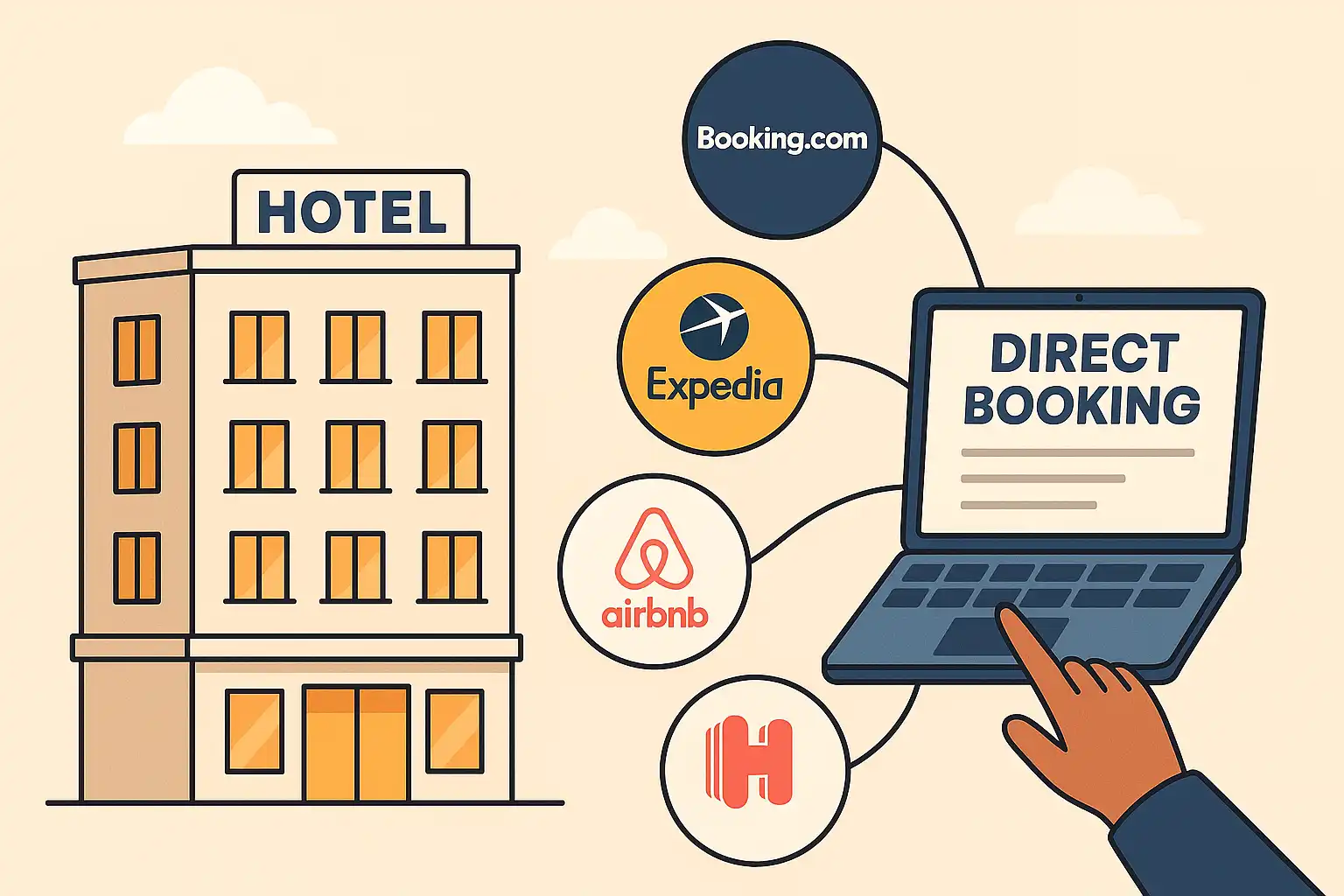
Managing Your Hotel’s Online Presence
Your online reputation directly affects bookings. Properties with 4.5+ star ratings typically see 15-25% higher conversion rates than lower-rated competitors. Make monitoring reviews a daily habit. Respond quickly and thoughtfully.
Photo quality matters too. Each booking site has different image specs and description formats. Great photos and clear, detailed descriptions reduce booking abandonment.
Updating rates and inventory across channels requires a channel manager. Manual updates work only for a few platforms; beyond that, technology is essential to prevent overbooking and save time.
Choose channel managers with real-time connectivity, broad platform coverage, and solid reporting. They cost $200-500 monthly but can save you 10-15 hours per week.
Track these key metrics monthly:
- Booking conversion rates by channel (aim for 2-4%)
- Average daily rate by channel
- Revenue contribution percentage
- Guest review ratings by booking source
- Cost of acquisition by channel
- Repeat booking rates
Emerging Platforms and Future Distribution Trends
Subscription booking models like Inspirato and Exclusive Resorts appeal to luxury travelers wanting predictable costs. These combine annual fees with discounted nightly rates, shifting your revenue calculations.
Social commerce via Instagram and TikTok is opening new booking paths, especially for visually-driven properties targeting younger guests. Early adopters gain an edge, though these channels are still small.
AI booking assistants are getting smarter, helping guests find and book rooms via chat or voice. Optimizing for voice search and AI recommendations means using structured data and natural language descriptions.
Blockchain platforms promise lower commissions by cutting out middlemen. Adoption is slow, but keep an eye on developments.
To prepare for the future:
- Invest in social media and visual storytelling
- Optimize for voice search and AI
- Monitor blockchain trends
- Explore subscription models
- Stay flexible and data-driven
Strategic Distribution Management for Maximum Revenue
The best hotel booking sites for you are those that balance booking volume, profit margins, and operational ease. Treat distribution as a revenue management function, not just marketing.
A diversified channel mix reduces dependence on any one platform and maximizes revenue per available room.
Review your strategy quarterly. Analyze commissions versus booking volume, scout new platforms, and optimize the balance between OTA reach and direct booking profits.
Hotels that master this strategic approach will secure long-term financial success.
Key Takeaways
- OTAs dominate bookings but come with high commissions; direct bookings boost margins.
- Rate parity and BAR policies influence pricing strategies.
- Meta-search platforms can drive direct bookings but require active management.
- Commission costs go beyond base rates; factor in all fees and staff time.
- Mobile optimization and loyalty programs are vital for direct booking success.
- Dynamic pricing and inventory allocation maximize revenue across channels.
- Reputation management and high-quality content improve conversion.
- Stay adaptable to emerging trends like AI, social commerce, and subscription models.
By understanding these dynamics and actively managing your distribution, you’ll be better positioned to grow revenue, improve guest experiences, and build a sustainable business in today’s competitive hospitality market.
